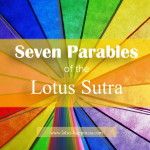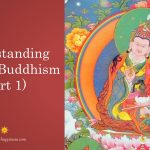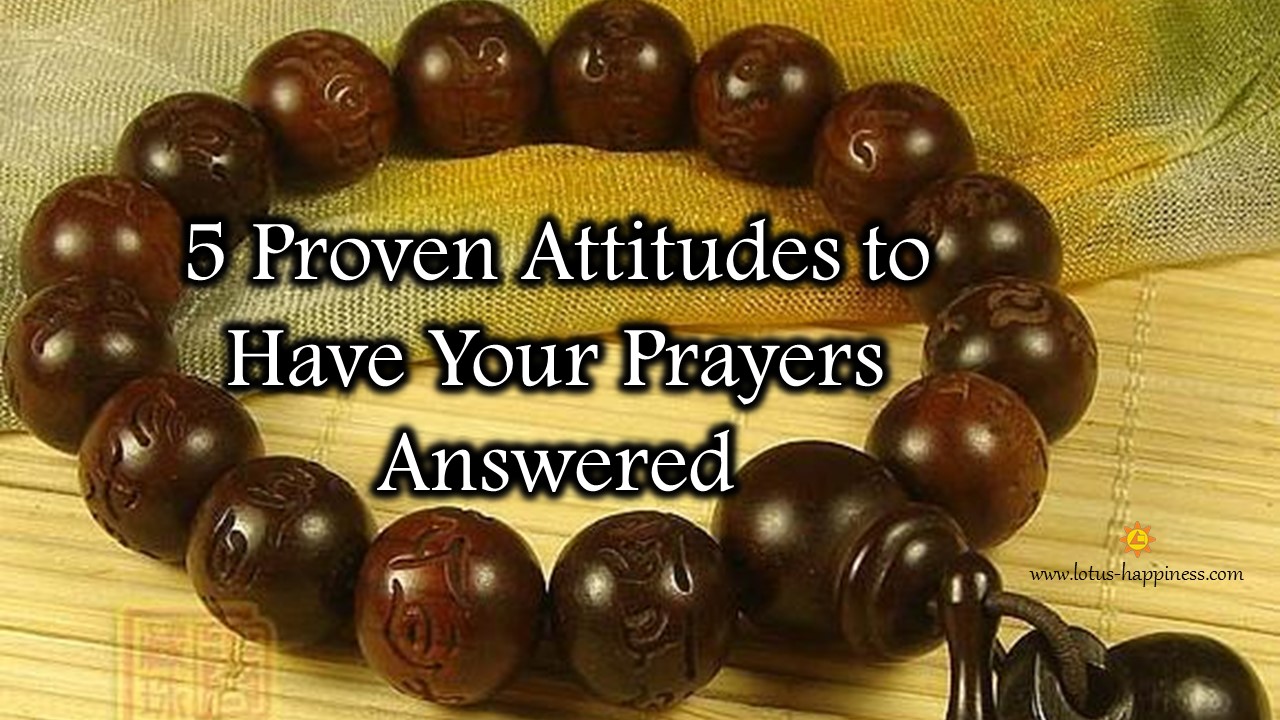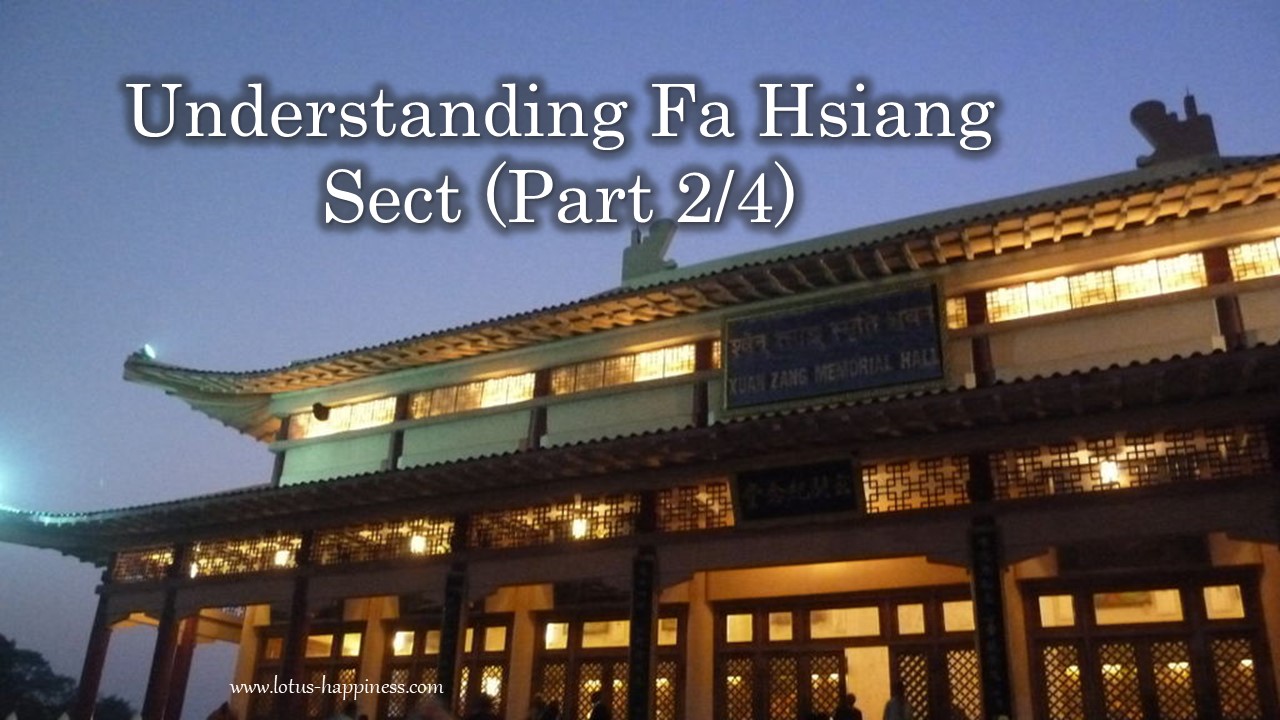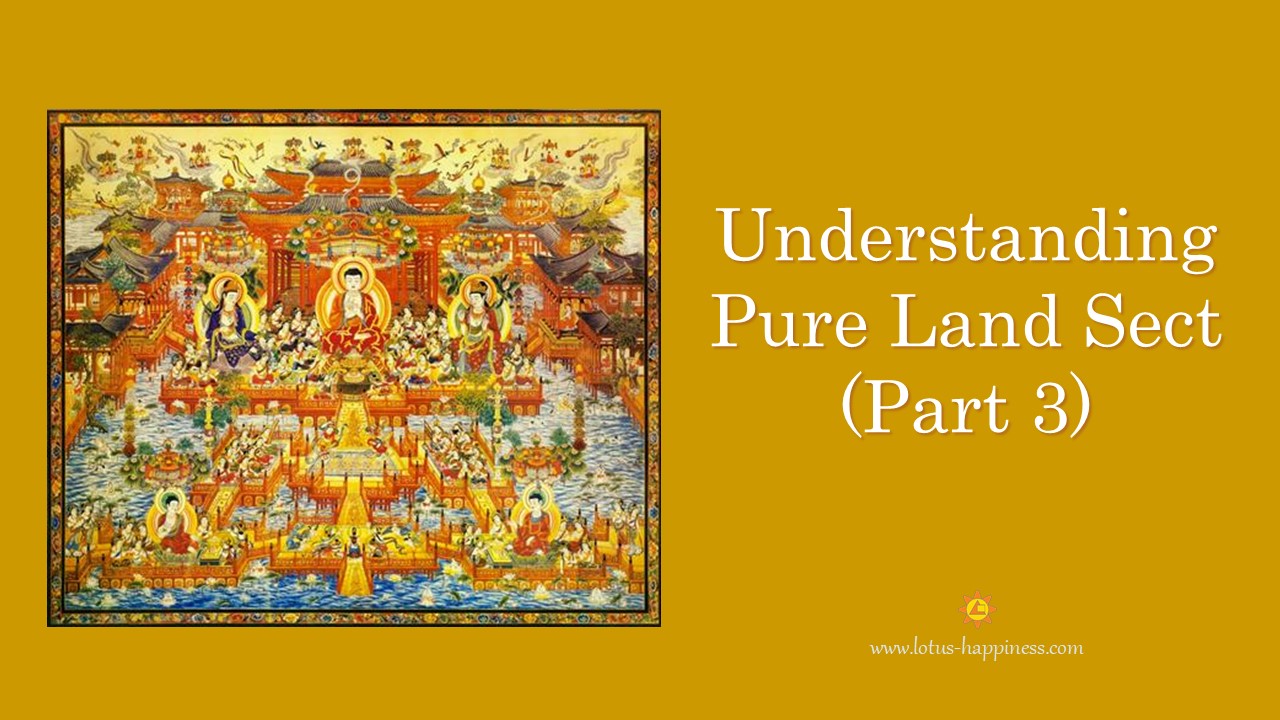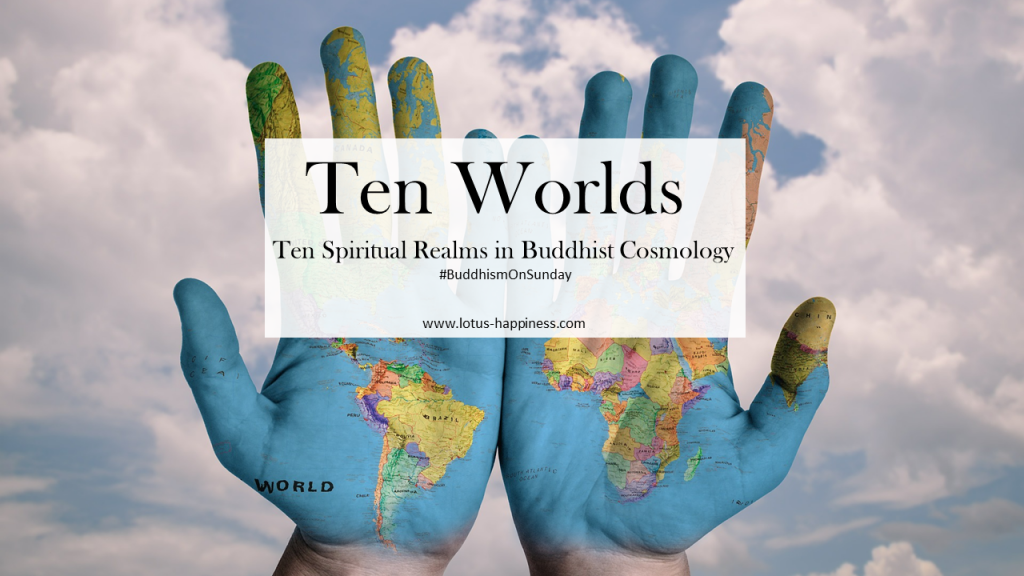
Ten Worlds (十界)
The Ten Worlds (also known as Ten Spiritual Realms of Life) delineate the various planes of existence in the Universe. It is part of the Buddhist cosmology that provides us a glimpse of the “homes” in which innumerable living beings dwell.
A little knowledge about the Ten Worlds goes a way in the understanding of Buddhism. Most of the Buddha’s teachings have some connections with the Ten Worlds. Thus, it will be helpful if we have some basic understanding of the Ten Worlds.
Detailed information about the Ten Worlds in general, and 31 Planes of Existence in particular, are mostly found in the Pali Canon such as Majjhima Nikaya, Anguttara Nikaya, Samyutta Nikaya, Digha Nikaya, Khuddaka Nikaya etc.
The Ten Worlds comprises of Six Lower Worlds and Four Higher Worlds.
The Six Lower Worlds, Six Lower Realms are (from highest to lowest):
- Heaven (天界)
- Human (人界)
- Asura (修罗界)
- Beast (畜生界)
- Hungry Spirit (饿鬼界)
- Hell (地狱界)
The Four Higher Worlds, Four Noble States are (from highest to lowest):
- Buddhahood (佛界)
- Bodhisattva (菩萨界)
- Pratyekabuddha (缘觉界)
- Shravaka (声闻界)
The worlds of Shravaka and Pratyekabuddha are collectively known as the Two Vehicles. The Buddha admonishes people in these two realms: if they choose to be complacent and remain where they are without the aspiration for Buddhahood, they will be stagnant and stuck at their present spiritual levels.
Perspective of Tian Tai and Nichiren
As opposed to emphasizing on the perspective of the living space/realms of life, Buddhism of Tian Tai’s and Nichiren’s focus on the application of the Ten World in daily lives, teaching people how to transform suffering into happiness.
The essence of Tian Tai’s and Nichiren’s understanding of the Ten Worlds: Each world contains within it the other nine. This means that even the life state of Buddhahood is inseparable from the other nine states. By anchoring oneself in the state of Buddhahood, one can bring forth the positive aspect of even the most deplorable and negative states of life.
Furthermore, Buddhist concepts such as Mutual Possession of Ten Worlds and Three Thousand Realms in a Single Moment of Life are all derivations of the Ten Worlds.
Two Aspects of Ten Worlds
Ten Worlds have two aspects: external and internal. External means it is an environment for the habitation of the living beings; while internal means it is the life condition for people experiencing varying emotions at any single moment.
- Living space, realm of life for various inhabitants (outer)
- State of life experienced from moment to moment (inner)
Our focus today is to understand the Ten Worlds from the perspective of the living space for various living beings as revealed by the Buddha in the Lotus Sutra.
Hell
The world of hell, or Naraka (Skt), is the world of Suffering. People who dwell in the state of suffering are tormented by incessant pain, depression, and grief. The first discourse by the Buddha – the Four Noble Truths – is the teaching on suffering. If we do not confront the problems of suffering, happiness is a delusion. The Buddha identifies sources of suffering: Three Poisons (greed, anger, ignorance) as well as birth and death.
Suffering can be a stepping stones, rather than a stumbling block. Successful people are those who triumph over failures and adversities to emerge victorious. There are innumerable people who overcome their difficulties through faith, fortitude and resilience. Rather than allowing external circumstances dictate their lives, they choose to create values for others.
A notable example is Louise Braille, the inventor of the Braille system. He lost both eyes in an accident during childhood. Yet, despite this sudden setback, he invented the Braille system for the blind and visually-impaired.
According to Buddhist cosmology, there are eighteen levels of hell. The world of hell is a place for purifying unwholesome karma. In Chapter 20: Bodhisattva Never Disrespectful, those people who disparaged, vilified, and assaulted Bodhisattva Never Disrespectful were subsequently reborn in the Avichi hell for a thousand of kalpa before being led by the Buddha towards Buddhahood.
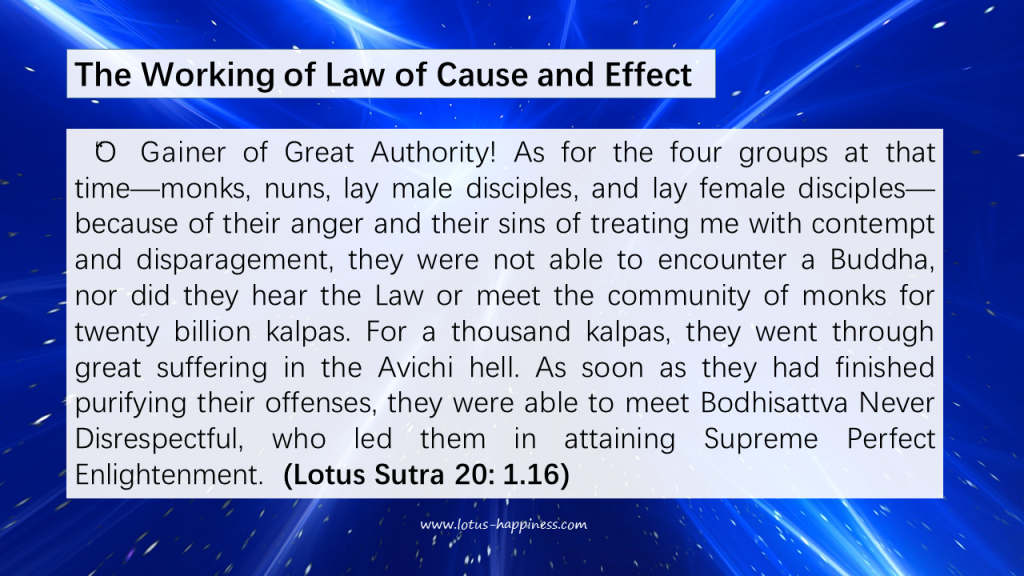
Hungry Spirit
The Buddhist world of Pretas (Hungry Ghosts) is the world of Hungry Spirit. Also known as the state of Hunger, people living in this state are characterized by insatiable desires for wealth, power, prestige, fame, pleasure etc. These people are living at the mercy of their relentless pursuit of material possessions.
Ghosts, demons and many other spirits dwell in this world. Some of these beings can be harmful to humans, hence bodhisattvas and heavenly gods bestow the Dharani (Buddhist mantra, magic spell, powerful divine incantation) to protect the practitioners of the Lotus Sutra.
A Search-and-Rescue officer shared his experience about many of the supernatural and paranormal encounters in the course of his profession in reddit. Some of these real-life stories include: people vanishing in an instant only to be found miles away, inexplicable staircases that are going no-where suddenly appear in the middle of the forest, fuzzy man who abducts children and the list goes on. Undoubtedly, these are the works of demons and evil spirits who harm human beings. If you wish to protect yourself from the evil spirits, it will be very helpful for you to embrace the Lotus Sutra by chanting Nam Myoho Renge Kyo, or Namo Bodhisattva Avalokitasvara, or recite any of the Dharani as found in Chapter 26: Dharani in the Lotus Sutra. The Buddhas and bodhisattvas will shield and protect you from the harms of demons and evil spirits.
Bodhisattva Medicine King
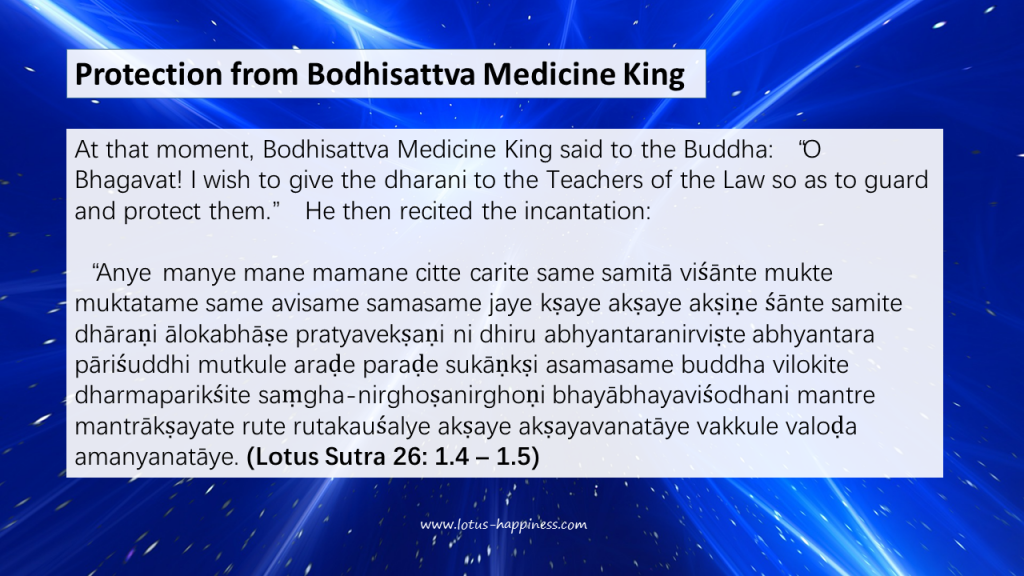
Heavenly King Protector of the Nation
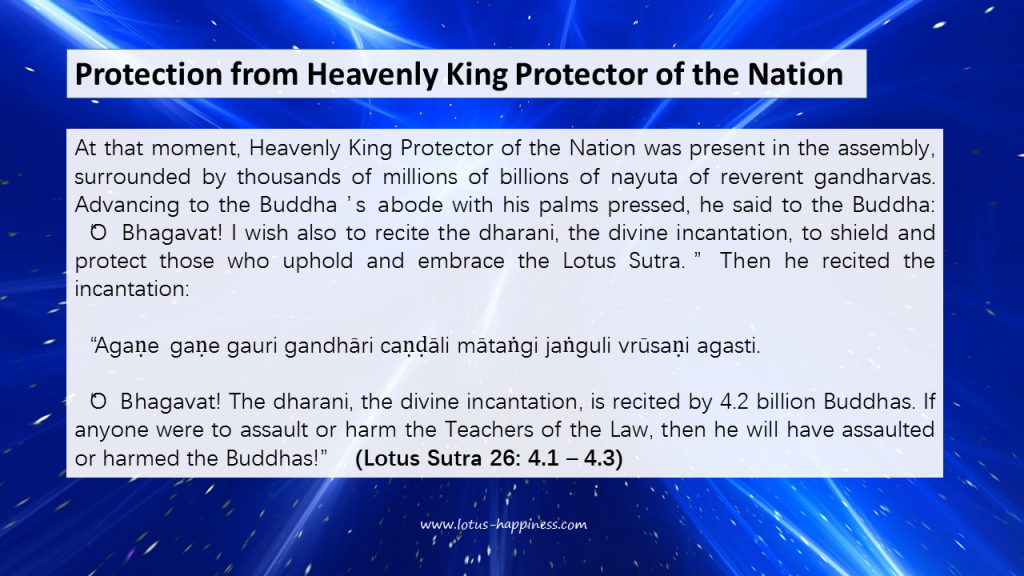
It is heartening that not all of these beings are evil and malevolent. Some seemingly evil spirits are benevolent and they even make a vow in front of the Buddha to protect the practitioners of the Lotus Sutra.

Beast
The world of Beast belongs to the animal kingdom. Animals, unlike humans, have limited capacity for rational reasoning and thinking. Driven by instinct, animals play the roles of either prey or predators. They have little opportunity to cultivate spirituality and develop wisdom.
The state of Beast or Animality is a life condition characterized by foolishness and impulsiveness. Devoid of the sense of morality, they are fearful of the strong but relish bullying the weak.
Living beings such as dragon (dragon head but the body of a serpent), kimnara (human body but the face of a horse) and garuda (head and wings of a bird but a human body) dwell in the world of Beast. These beings are guardians of Buddhism.
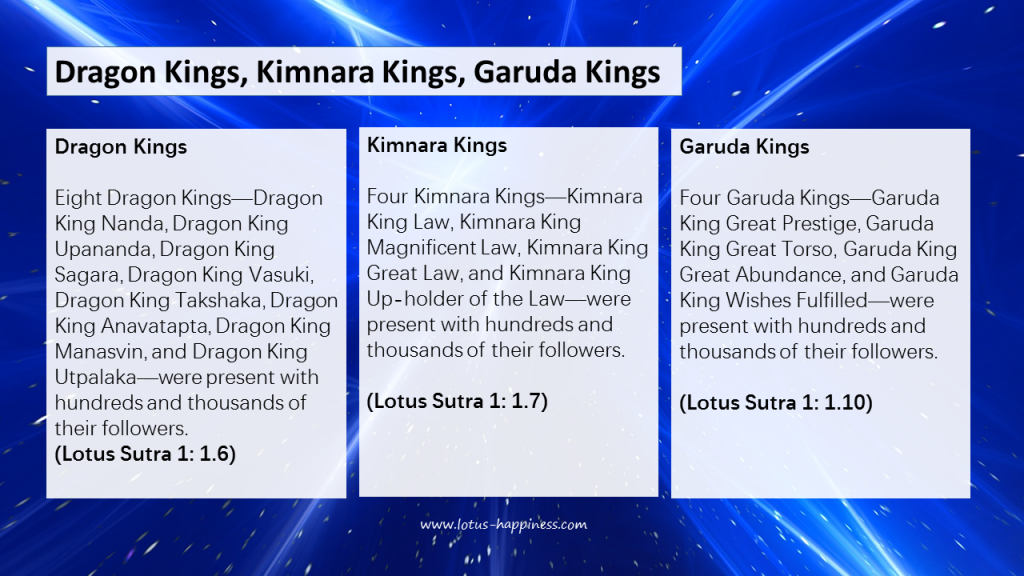
Asura
The state of Asura is also known as the state of Anger. This is a potentially debilitating state characterized by qualities such as competitiveness, jealousy, arrogance, power hungry etc. People in this state tend to be driven, argumentative, and self-serving. If you do a personality assessment such as DISC or MBTI, and the results show that you are a high “D – dominant” (for DISC) or ENTJ (for MBTI), then there is a high likelihood for you to display “asura-like” behaviours.
Asura is a type of contentious and belligerent demigods who are at loggerhead with Devas (heavenly gods). They used to live on top of Mount Sumeru but were driven down by the Devas to the bottom of the mountain. The female Asura is said to be of exceptional beauty. King Shakra married the daughter of King Asura but it wasn’t helpful in maintaining a peaceful relationship between Deva and Asura.
Four Asura Kings—Asura King Balin, Asura King Kharas-kandha, Asura King Vemachitrin, and Asura King Rahu—were present with hundreds and thousands of their followers. (Lotus Sutra 1: 1.9)
Human
We dwell in the Human world on Earth. Do bear in mind that we are not the only humans, there are innumerable species of human out there in the Universe. Our brothers and sisters are far more evolved in terms of spirituality and advanced in technology as depicted in this book “Thiaoouba Prophecy” written by Michel Desmarquet.
The state of Human is marked by reason and tranquillity. Nevertheless, the minds of humans are delicate and volatile. Should we not mindful of our thoughts and emotions, we can easily fall prey to anger, foolishness, greed and depression. Hence, meditation is critical to develop our minds and spirituality.
One of the advantages to be born as a human is the limitless opportunities to cultivate good causes for ourselves and others. Problems abound and sufferings are everywhere. If we choose not to lament upon problems but seek creative solutions to deal with them, then we are able to create tremendous values to benefit our fellow humans.
Heaven
The world of Heaven is characterized by supreme bliss. It is a pleasurable place in which all desires are fulfilled. Unlike the eternal happiness of Buddhahood, however, the immense bliss is short-lived and transient. The happiness in this realm is dependent upon external factors while the happiness in the realm of Buddhahood is true bliss as it is not dependent upon any external triggers.
One of the downsides of Heaven is the lack of opportunities to create good causes for themselves. Everything in Heaven is next to perfection; nobody is ill, sad, or poor. Therefore, they spend most their time enjoying themselves. Once their merits are depleted, they will be reborn again in any of the six lower worlds. Shakyamuni Buddha was once reborn as King Shakra in the remote past as well. Here is the quote in the Lotus Sutra about how King Shakra enjoys his life in the state of Heaven:
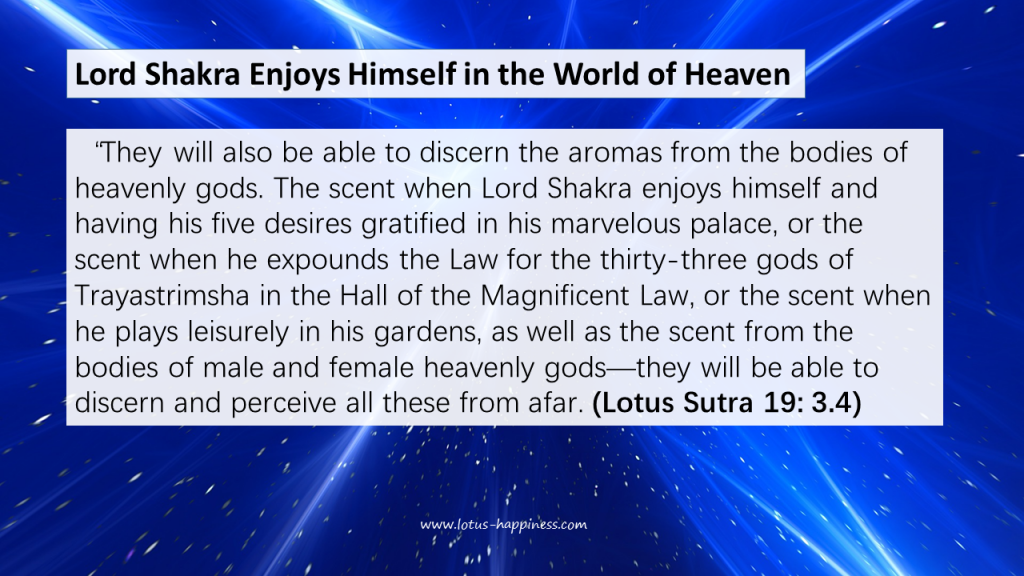
Heaven is the abode for innumerable heavenly gods. There are three major types of heavenly beings: Shakra, Brahma and Mara.
King Shakra is the ruler of the 33 Gods. King Brahma is the Lord of the Saha world. Abrahamic religions are somehow related to King Brahma and I shall devote some time writing about this in my later post.
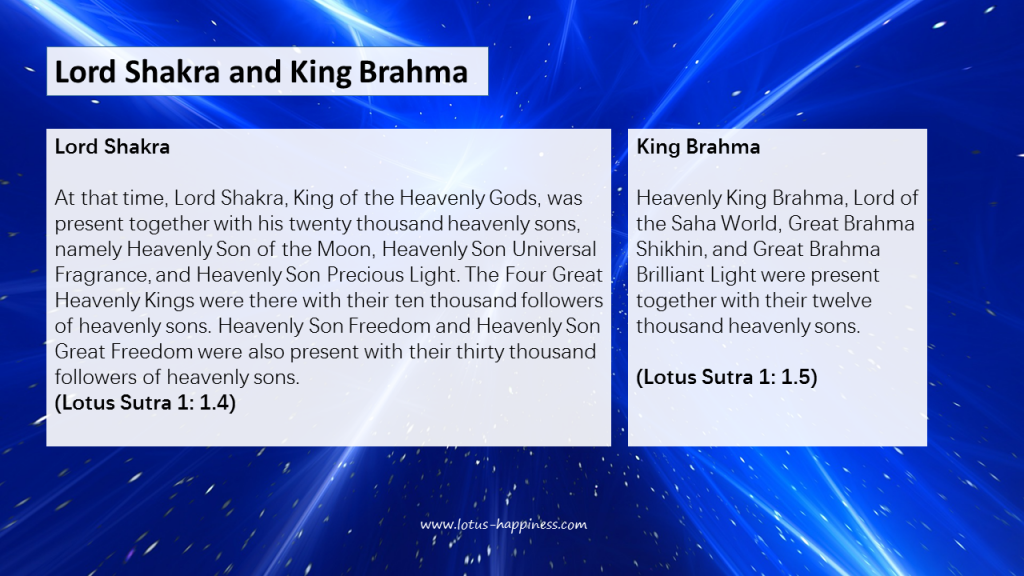
King Mara is the Devil King who rules over numerous demons. They live in the Sixth Heaven, the highest heaven in the world of desire. This realm is also known as the Heaven of Freely Enjoying Things Conjured by Others.
Shravaka
Shravaka, or the Voice-Hearer, is the world for those who hear and embrace the Buddha’s teachings for the first time. Those who are born in the world of Shravaka (and above) means they have transcended Samsara – the cycles of birth and death in the six lower realms. The state of shravaka can be further demarcated into four stages of preliminary enlightenment: Sotapanna (Stream-enterer), Sakadagami (Once-returner), Anagami (Non-returner), and Arhat.
This state is also a state of Learning. Marked by humility, people in the state of Learning are continuously striving for personal growth and development. Contrary to those who are arrogant and egoistic, Shravakas are aware of their limitations and they are always seeking rooms for improvement.
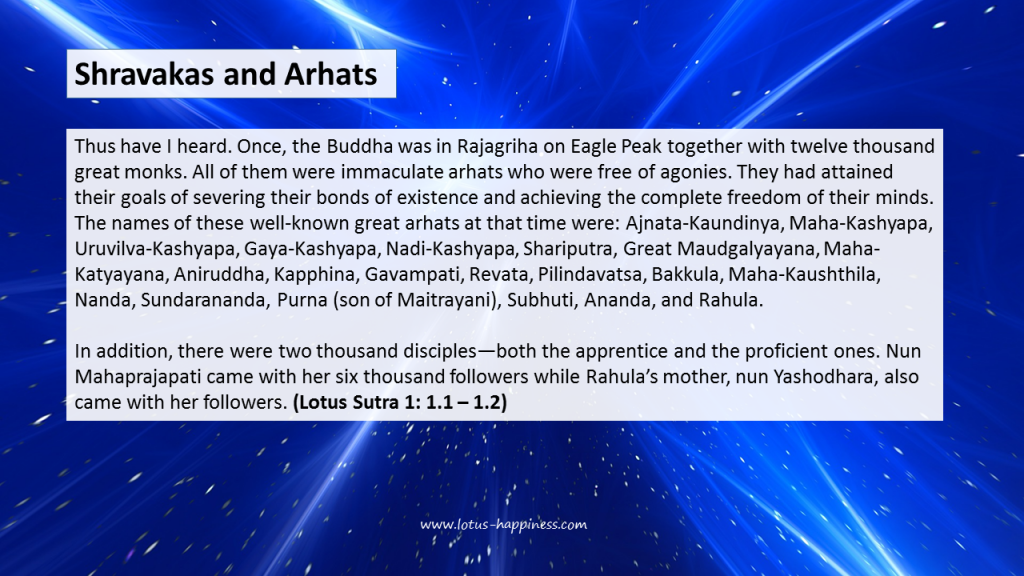
Pratyekabuddha
The world of Pratyekabuddha, or the Cause-Awakened Ones, is a living space for the “Lone Buddha” or “Private Buddha”. Pratyekabuddha achieves “pseudo” enlightenment without any teachers or masters. They are said to have existed when a Buddha is not present in the world.
Also known as the state of Realization, this is a state of discovering truth through personal insights and observations through life experience and regular meditation. Some of the Zen Buddhist practitioners are pratyekabuddhas if they purely practice meditation without embracing any of the Buddha-Dharma.
Bodhisattva
The state of bodhisattva is the life condition of people who are altruistic and compassionate. Empathetic and kind-hearted, they work selflessly for the welfare of others. The purpose of a bodhisattva is to alleviate the sufferings of people. The spirit of bodhisattva transcends the boundaries of religion. People who embrace non-Buddhist teachings but are taking concrete actions to help others are also considered as walking the bodhisattva path.
Innumerable bodhisattvas appear in the various Mahayana sutras. Some of the more renowned bodhisattvas are as follows:
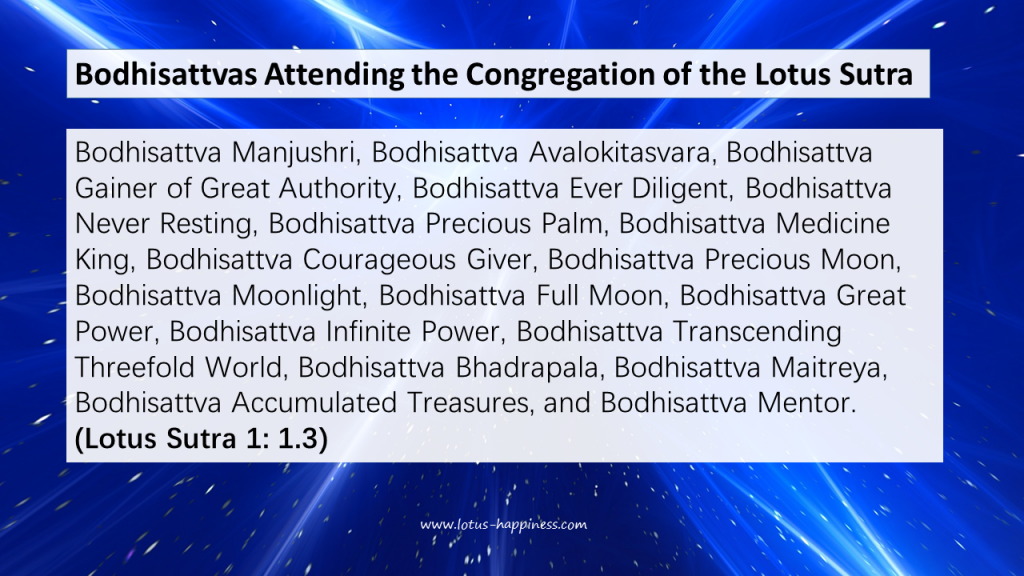
The most well-known bodhisattva, however, is Bodhisattva Avalokitasvara, Chenrezig, or Guan Shi Yin Pu Sa. Guan Yin is the embodiment of profound love and compassion. Her presence is ubiquitous and her divine powers are immeasurable. Those who wish to have children may worship Guan Yin because she will bestow a child of immense good fortune for people who have faith in her.
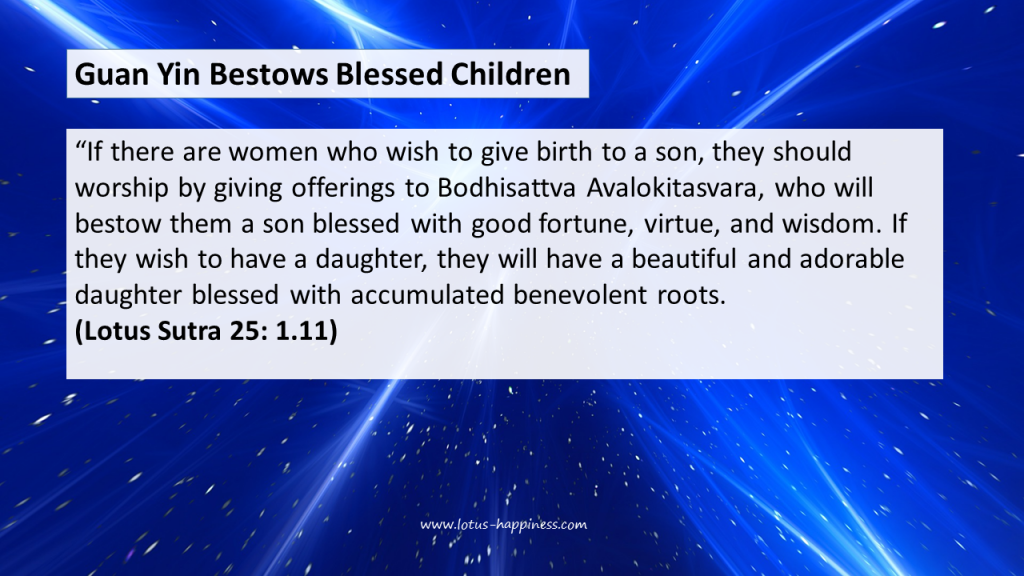
Buddhahood
The Buddha is a supreme being who has attained Supreme Perfect Enlightenment. The world of Buddhahood is the abode of the Buddhas. Characterized by four virtues of the Buddha, namely True Self, Eternity, Purity, and Happiness, the state of Buddhahood is the embodiment of immeasurable wisdom, compassion, courage and life force. The world of Buddhahood is also an epitome of complete freedom, omniscence and transcendence.
In Chapter 7 of the Lotus Sutra, the Buddha discloses his past history as one of the 16 princes who attained Buddhahood during the the age of Great Astuteness and Surpassing Wisdom Buddha:
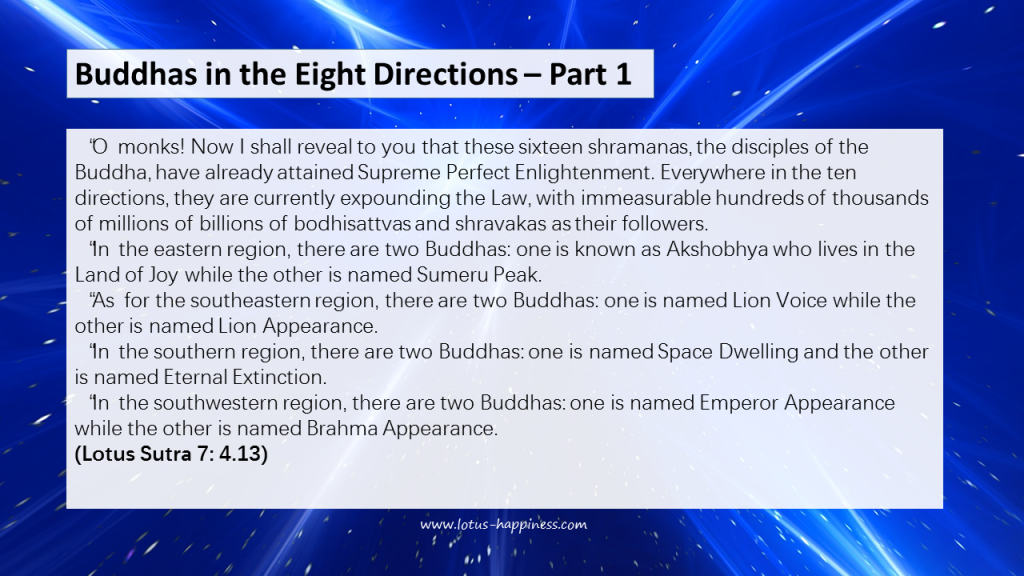
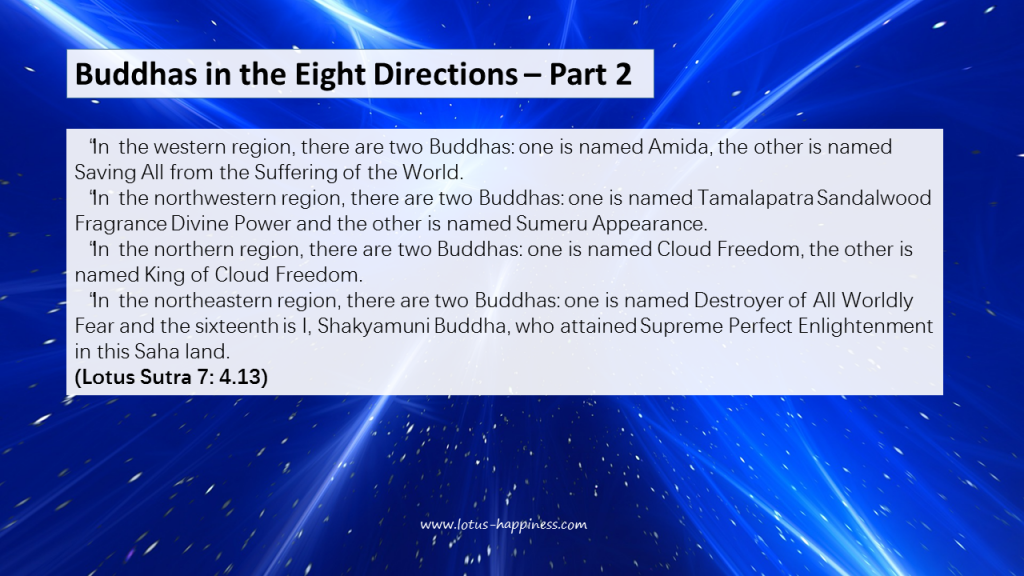
Summary
Today, we have covered the Ten Worlds in terms of the spiritual realms of living space for all types of beings today. Here is the summary:
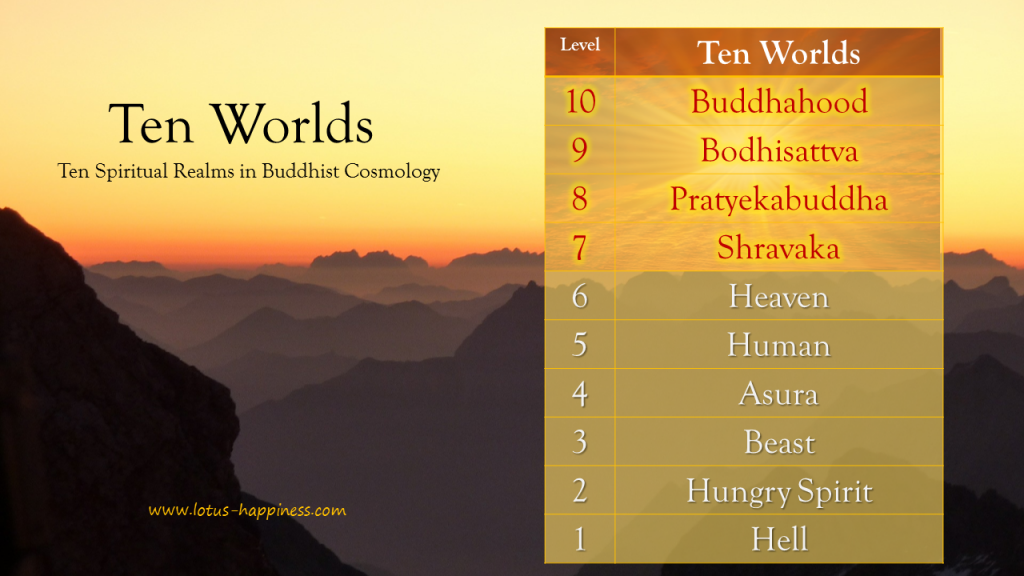
Enjoying the post? Leave a comment or share with your friends!
May you be peaceful, happy and healthy!



